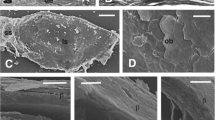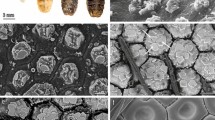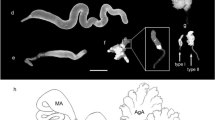Abstract
THE flattened cells, forming the imbricated scaly sheath of the keratin fibres, wool and hair, appear comparatively structureless under the optical microscope ; using the electron microscope (R.C.A. Type EMU), however, we have been able to distinguish several component structures of the cuticle cells of wool both by their appearance and by their resistance to chemical and enzymic attack.
This is a preview of subscription content, access via your institution
Access options
Subscribe to this journal
Receive 51 print issues and online access
$199.00 per year
only $3.90 per issue
Buy this article
- Purchase on Springer Link
- Instant access to full article PDF
Prices may be subject to local taxes which are calculated during checkout
Similar content being viewed by others
References
Woods, Proc. Roy. Soc., A, 166, 76 (1938).
Speakman and Stott, J. Text. Inst., 22, T.339 (1931).
Mercer, Nature, 155, 573 (1945).
Speakman, Chamberlain and Menkart, J. Text. Inst., 36, T.91 (1945).
Speakman and Menkart, Nature, 156, 143 (1945).
Author information
Authors and Affiliations
Rights and permissions
About this article
Cite this article
MERCER, E., REES, A. Structure of the Cuticle of Wool. Nature 157, 589–590 (1946). https://doi.org/10.1038/157589a0
Issue Date:
DOI: https://doi.org/10.1038/157589a0
This article is cited by
-
Frictional Properties of Wool
Nature (1946)
Comments
By submitting a comment you agree to abide by our Terms and Community Guidelines. If you find something abusive or that does not comply with our terms or guidelines please flag it as inappropriate.



